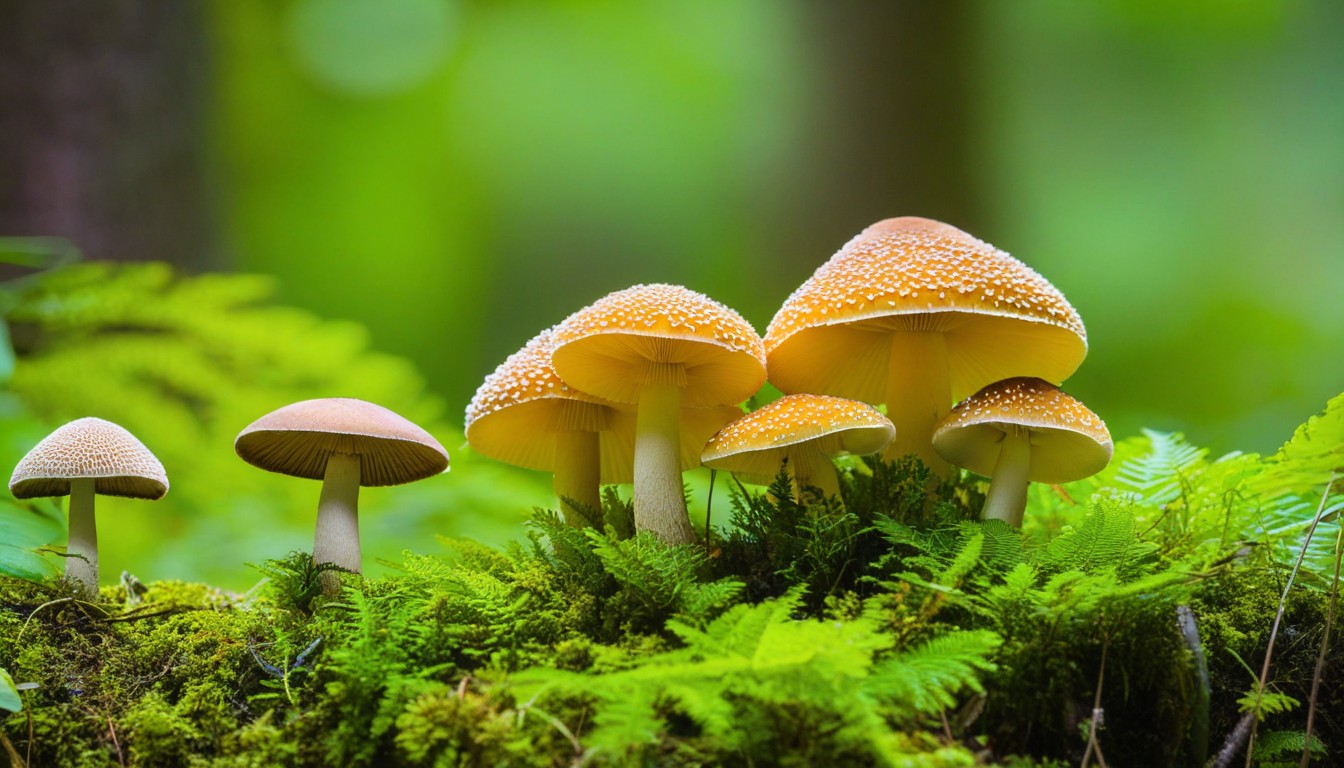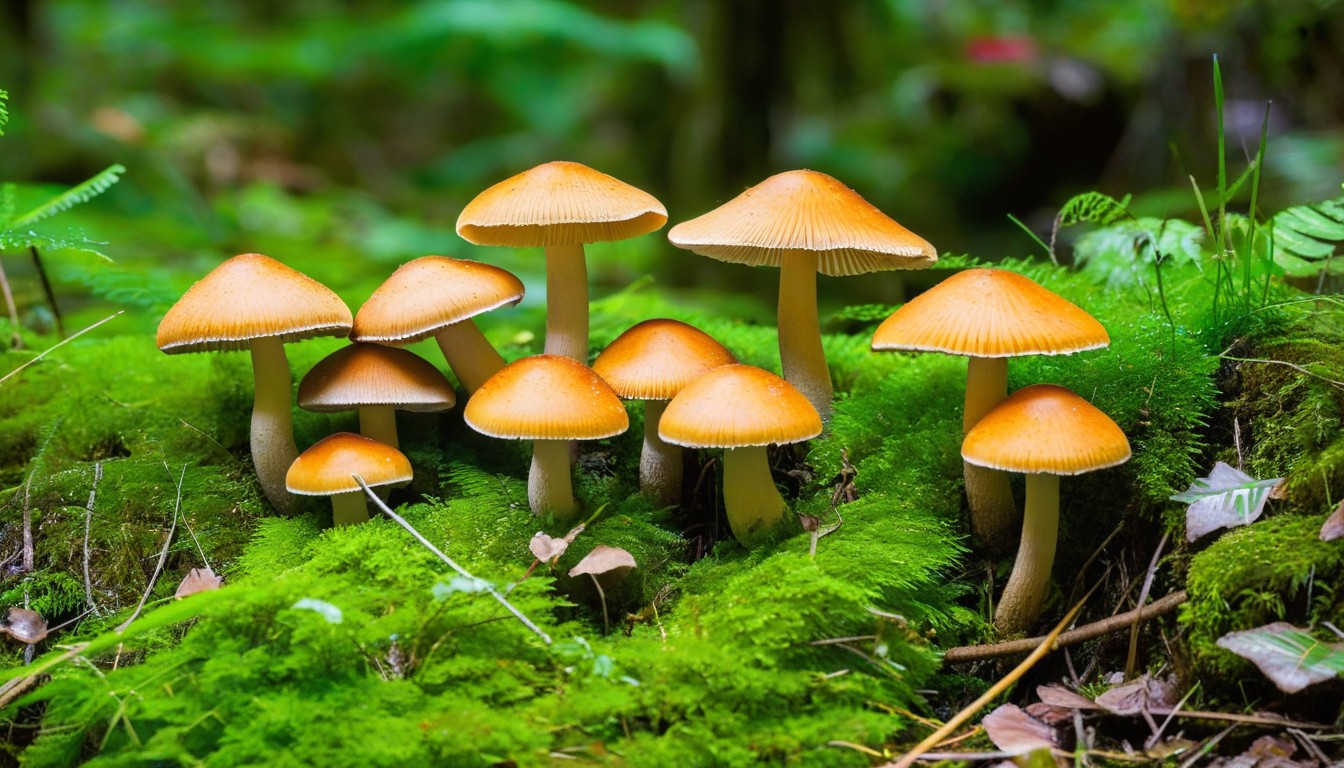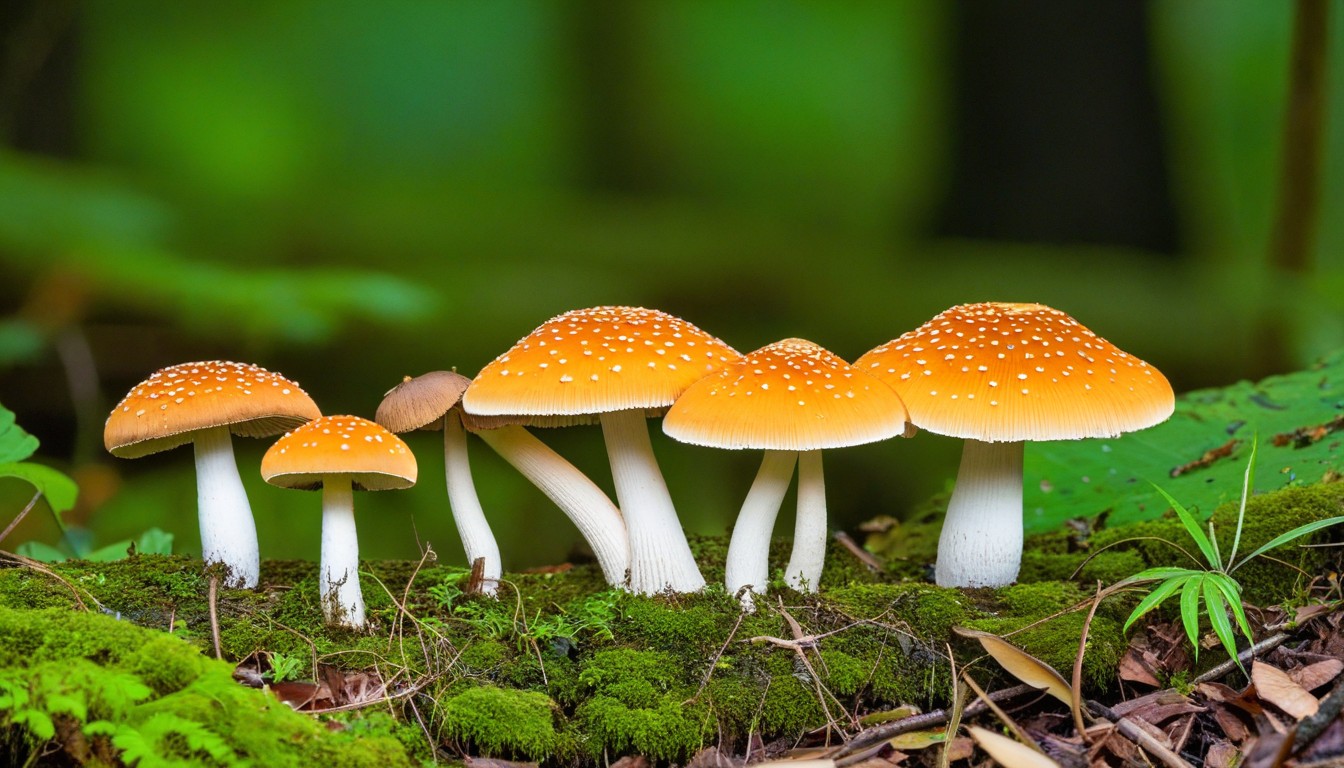Utah is home to a diverse range of edible mushrooms, making it an excellent destination for both beginners and experienced foragers. Exploring the forests and mountains of Utah, you can find an array of delectable mushrooms that are both nutritious and delicious. However, before you begin your mushroom hunting journey, it’s essential to understand the basics of mushroom foraging, including identifying the different varieties and adhering to proper foraging techniques. In this article, we will guide you through the fascinating world of mushroom foraging in Utah, providing detailed insights into the different mushrooms varieties, foraging tips, sustainable practices, and much more.
Key Takeaways:
- Utah is home to a diverse range of edible mushrooms.
- Learn the basics of mushroom foraging, including foraging techniques and identifying different mushroom varieties.
- Discover the ideal locations for mushroom foraging in Utah.
- Explore the different native edible mushroom varieties found in Utah, including their unique characteristics and ideal habitats.
- Understand the importance of sustainable foraging practices and ethical harvesting.
The Basics of Mushroom Foraging
If you’re new to mushroom foraging, it’s essential to start with the basics. Before venturing into the wilderness, it’s crucial to familiarize yourself with essential tips for beginners, safety precautions, and the importance of proper identification.
First and foremost, it’s crucial to recognize that mushroom foraging can be dangerous if proper precautions are not taken. Some mushrooms can cause severe illness or even death if ingested, making it imperative to exercise caution and be meticulous when identifying mushrooms.
Here are some essential safety tips to keep in mind:
- Never consume a mushroom that you can’t identify with 100% certainty.
- Always harvest mushrooms in moderation and leave enough behind for spores to mature.
- Wear appropriate clothing and footwear, especially if hiking in the wilderness.
- Familiarize yourself with the different types of poisonous mushrooms in your area and learn how to recognize them.
Beyond safety, a good mushroom foraging experience begins with basic knowledge. Start by researching the different types of mushrooms that are native to your area, along with their preferred habitats and growing seasons. Foraging books and online mushroom guides are a great place to start, and they can provide valuable information on identifying mushrooms and finding the best foraging spots.
It’s also essential to bring the right equipment, including a basket or bag for collecting mushrooms. Always use a knife to sever the base of the mushroom from the ground rather than uprooting it. This method helps preserve the mushroom’s spores and ensures a more sustainable harvest for future seasons.
Tip: For a beginner-friendly foraging experience, try attending a guided mushroom foraging tour. These tours often take place in local forests and are led by experienced foragers who can help you identify mushrooms and learn more about the local ecosystem.
Remember, mushrooms can be unpredictable, and their growing patterns can vary based on factors like temperature, precipitation, and soil composition. While foraging for mushrooms, always exercise caution and remain observant of your surroundings.
Ideal Locations for Mushroom Foraging in Utah
Utah offers a plethora of ideal mushroom foraging locations, each with its unique characteristics and diverse array of edible mushrooms. Here are some of the best spots to explore:
|
Location |
Types of Mushrooms Found |
|---|---|
|
Uinta Mountains |
Morels, Porcini, Chanterelle |
|
Wasatch Mountains |
Morels, Porcini, Chanterelle, Hedgehogs |
|
Boulder Mountain |
Morels, Chanterelle, Porcini, Hedgehogs |
|
Bear River Range |
Morels, Chanterelle |
Other highly recommended locations for mushroom foraging in Utah include Fishlake National Forest, Sanpitch Mountains, and Tushar Mountains. Remember to obtain proper permits, as some areas require a permit for mushroom foraging. Happy hunting!
Native Edible Mushroom Varieties in Utah

Utah is home to a diverse range of native edible mushrooms. Each variety has unique characteristics, flavors, and ideal habitats for thriving. Here are some of the most popular varieties you can find when foraging in Utah:
|
Mushroom Variety |
Characteristics |
Flavor |
Ideal Habitat |
|---|---|---|---|
|
Agaricus |
Large, white mushroom with gills and a ring around the stem |
Mild and nutty |
Grows in grassy areas |
|
Boletus edulis |
Large, brown mushroom with a round cap and sponge-like pores |
Nutty and meaty |
Found in coniferous forests |
|
Morchella |
Honeycomb-like cap and stem with ridges and pits |
Nutty and earthy |
Thrives in burned or disturbed areas |
|
Cantharellus |
Trumpet-shaped and bright orange or yellow with smooth undersides |
Peppery and fruity |
Found in coniferous forests and near water sources |
|
Lactarius |
Spoon-shaped cap with white or orange gills that ooze a milky liquid |
Peppery and slightly bitter |
Grows in coniferous forests |
It’s essential to properly identify mushroom varieties before consuming them, as some varieties can be toxic. Be sure to reference a reliable field guide or professional forager when in doubt.
Hunting for Morels in Utah

If you’re a fan of the earthy and nutty flavor of morel mushrooms, then Utah is the place to be for mushroom hunting. Morels thrive in the springtime, usually from late March to early May. These mushrooms prefer wooded areas near cottonwood trees, ash trees, or dead and dying elms.
One way to find morels is to scout for previous burn areas from wildfires. In these areas, deciduous trees like aspens and cottonwoods tend to grow. The morel fungi may have intertwined with the decaying roots of the trees, which could lead to a thriving colony of morels.
When it comes to spotting morels, look for sandy soil or soil rich in organic matter, particularly if it’s moist. Some early signs of morels in the area include blooming trillium and snowdrops. Experts recommend looking for areas with southern or southwestern-facing slopes, which have had more sunlight exposure.
It’s essential to be cautious when mushroom hunting, as there are several poisonous look-alike varieties that can be difficult to distinguish from morels. Always carry a reliable identification book or attend a local mushroom hunting workshop to ensure you pick the right mushrooms.
Get ready to enjoy the delicacy of these elusive mushrooms and try them in various dishes from soups to salads. Whether you’re a seasoned or novice mushroom hunter, make sure to follow guidelines and local regulations for ethical and sustainable mushroom foraging practices.
Chanterelles and Other Delicacies
Utah is home to a variety of tasty mushrooms, including the highly coveted chanterelle. These gourmet mushrooms have a subtle and nutty flavor, making them a popular ingredient in upscale restaurant dishes. Not only do they taste delicious, but they also offer numerous health benefits, such as immune support and anti-inflammatory properties.
Aside from chanterelles, Utah is also home to other unique gourmet mushrooms such as the lobster mushroom, which has a seafood-like taste, and the lion’s mane mushroom, which has a texture and flavor similar to crab meat. These mushrooms are a great way to add a twist of originality to your favorite recipes.
|
Mushroom Type |
Characteristics |
Culinary Uses |
|---|---|---|
|
Subtle, nutty flavor; golden yellow color; trumpet-shaped cap |
Best enjoyed sautéed or roasted as a side dish or in a cream-based soup or sauce. | |
|
Lobster Mushrooms |
Reddish-orange color; dense, meaty texture; seafood-like flavor |
Often used as a substitute for seafood, such as in cioppino or seafood pasta dishes. |
|
Lion’s Mane Mushrooms |
White, furry appearance; unique, meaty flavor similar to crab meat |
Best enjoyed sautéed or roasted as a meat substitute, such as in tacos or sandwiches. |
To ensure you are foraging safely and ethically, make sure you are familiar with the characteristics of each type of mushroom and their ideal growing conditions. When prepared correctly, these gourmet mushrooms can add a unique burst of flavor to any dish.
Safe and Sustainable Foraging Practices

Foraging for edible mushrooms in Utah can be an enjoyable and rewarding experience, but it’s crucial to do so safely and sustainably. Here are some tips for ethical harvesting and preserving mushroom ecosystems:
Practice Sustainable Foraging
In order to sustain the population of edible mushrooms, it’s essential to practice sustainable foraging techniques. Always keep the following tips in mind:
- Don’t overharvest. Leave at least half of the mushrooms you find to allow for future growth and reproduction.
- Only collect what you need. Avoid harvesting more than you’ll use to prevent waste.
- Never uproot mushrooms. Cutting them off at the base will allow the fungi to keep growing and spreading.
- Use proper tools. A small knife or scissors is less damaging than pulling or tearing mushrooms off of trees or the ground.
Harvest Ethically
Along with sustainable foraging, ethical harvesting is important for maintaining the ecosystem and respecting the environment. Keep the following guidelines in mind:
- Respect private and protected lands. Only forage in areas where it is legal and permissible to do so.
- Do not disturb wildlife, habitats, or other plant species.
- Avoid trampling on vegetation and damaging other foliage.
- Get permission from landowners before foraging on private property.
Preserve Mushroom Ecosystems
Preserving mushroom ecosystems is necessary for the survival of these unique species. Follow these tips to help protect them:
- Avoid using pesticides or other chemicals that may harm mushrooms or their habitats.
- Educate others about the importance of maintaining mushroom populations.
- Report any illegal harvesting or suspicious activity in mushroom habitats.
- Join conservation groups or support funds dedicated to protection and preservation of mushroom ecosystems.
By practicing safe and sustainable foraging techniques, you can help maintain the delicate balance of Utah’s mushroom ecosystems and continue enjoying the thrill of foraging for these delicious delicacies.
Tips for Mushroom Identification
Identification is a critical aspect of mushroom foraging to distinguish edible from poisonous varieties. Here are some valuable tips:
- Examine the cap: Features like color, texture, and shape help to distinguish various varieties. For instance, chanterelle mushrooms have a wavy cap and range from yellow to orange.
- Check the gills: Gills are the spore-producing structures underneath the cap. Colors like pink, white, and brown aid in identification. For instance, oyster mushrooms have white to cream-colored gills.
- Look at the stem: Features like texture, length, and color help distinguish varieties like the shaggy mane mushroom, which has a white, slender stem with delicate hairs.
- Smell the mushroom: Different mushrooms have distinctive scents. For instance, morels have a nutty, earthy scent, while the pungent odor of the stinkhorn mushroom is unmistakable.
- Use guidebooks: Refer to guidebooks like “Mushrooms of the Rocky Mountain Region” by Vera Evenson for a comprehensive guide on mushroom identification.
- Consult with an expert: Reach out to local mycologists or mushroom clubs like the Utah Valley Mushroom Society for further assistance in mushroom identification and safe foraging practices.
By utilizing these tips and resources, you can safely and confidently identify mushrooms, ensuring a successful and enjoyable foraging experience.
Cooking and Preserving Edible Mushrooms

After foraging a variety of edible mushrooms in Utah, it’s time to put them to use! With their unique flavors and textures, mushrooms can be incorporated into many delicious dishes. Here are some mushroom recipes to inspire your next culinary adventure:
|
Recipe |
Description |
|---|---|
|
Wild Mushroom Risotto |
A creamy rice dish cooked with a mixture of wild mushrooms, onions, garlic, and parmesan cheese. |
|
Roasted Mushroom and Cauliflower Tacos |
Oven-roasted mushrooms and cauliflower combined with black beans, avocado, and spices in a soft tortilla. |
|
Mushroom Quiche |
A savory egg dish filled with sautéed mushrooms, cheese, and fresh herbs in a flaky crust. |
When cooking with mushrooms, it’s essential to use the proper techniques to bring out their unique flavors and textures. Here are some tips to keep in mind:
- Slice mushrooms thinly to ensure even cooking.
- Use a non-stick pan or add oil to prevent sticking.
- Season mushrooms with salt and pepper before cooking.
- For a deeper umami flavor, cook mushrooms until they release their moisture and begin to brown.
If you’re unable to use all of your mushroom harvest at once, there are many preservation methods to help extend their shelf life. Here are some techniques to consider:
- Drying: Slice mushrooms thinly and place them on a baking sheet in a 150°F oven until they are completely dried, then store in an airtight container.
- Freezing: Clean and chop mushrooms, then freeze them in an airtight bag or container for up to 6 months.
- Pickling: Combine mushrooms, vinegar, spices, and salt in a jar and place in the refrigerator for at least a day before use.
By exploring different cooking and preservation methods, you can make the most of your edible mushroom harvest and enjoy their unique flavors year-round!
Conclusion
In conclusion, the art of foraging for edible mushrooms in Utah can be both an exciting adventure and a treat for your taste buds. As you venture out to explore the prime foraging locations in Utah, it’s important to remember to prioritize safety and ethical harvesting practices to ensure the longevity of mushroom ecosystems.
With a basic understanding of mushroom identification and the various cooking and preservation methods, you can take your mushroom harvests to the next level and create delightful culinary masterpieces. So why not embark on this journey of exploration and experimentation? We wish you happy foraging and delicious eating!
FAQ
Are all mushrooms in Utah safe to eat?
No, not all mushrooms in Utah are safe to eat. It is important to properly identify mushrooms before consuming them. Some mushrooms can be toxic and cause severe illness or even death if ingested.
What are the safety precautions to take while mushroom foraging?
When mushroom foraging, it is crucial to wear appropriate clothing, including long pants and sturdy shoes. Carry a mushroom identification guidebook and consult experienced foragers. Always avoid consuming mushrooms that you cannot positively identify.
Can I forage mushrooms in public parks?
Foraging mushrooms in public parks may not be allowed in some areas. It is essential to check local regulations and obtain proper permits before engaging in mushroom foraging activities.
What is the best time of year for mushroom foraging in Utah?
The prime time for mushroom foraging in Utah is typically in the spring and fall seasons. Different mushroom varieties have specific fruiting periods, so it may vary depending on the species you are searching for.
Can I sell the mushrooms I forage?
Selling wild mushrooms in Utah may require permits or licenses, depending on the location and the quantity of mushrooms harvested. It is important to consult local regulations and obtain the necessary permissions before selling foraged mushrooms.
How should I preserve the mushrooms I forage?
To preserve mushrooms, it is best to clean them thoroughly and remove any dirt or debris. You can then choose to freeze them, dehydrate them, or preserve them in vinegar or oil. Proper storage in a cool, dry place is essential to maintain their quality and prevent spoilage.
Are there any poisonous mushrooms in Utah?
Yes, there are poisonous mushrooms in Utah, and it is essential to be cautious and avoid consuming any mushrooms unless you are certain of their identification. It is highly recommended to consult an experienced mycologist or join a local mushroom club for guidance.

